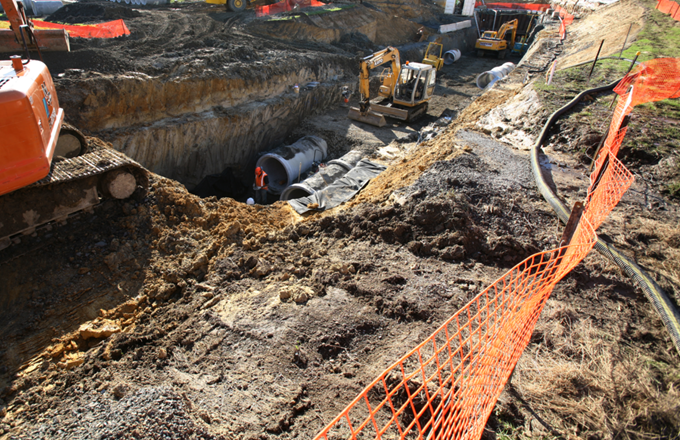The Auckland Unitary Plan identifies 15,000ha of rural land that could be developed for future urban growth over the next 30 years. This land could potentially accommodate 137,000 dwellings.
But such development requires substantial investment in new bulk infrastructure. The cost of this investment is estimated at around $20 billion to $30 billion.
In the latest Insights paper, Auckland Council’s Senior Economist, Harshal Chitale, looks at how Auckland should fund greenfield infrastructure, and notes that those who benefit most from new infrastructure provision should pay for the bulk of it.
Infrastructure is expensive
“The indicative cost of new bulk infrastructure such as water and wastewater mains, arterial roads, stormwater pipes to service this land is about $20 billion, or around $146,000 per dwelling,” says Mr Chitale.
“NZTA [the NZ Transport Agency] will pay its share of costs of transport infrastructure but a large part of the total costs will be borne by Auckland Council.”
“Bulk infrastructure required for urban growth often needs to be in place before development can take place. This makes land serviced with infrastructure more valuable than non-serviced land.”
Who should pay?
“In general, those who benefit from new infrastructure should fund the bulk of the costs," says Harshal Chitale.
“Landowners in the areas that get serviced by new infrastructure receive benefits through increases in land value, as urbanisation would not be possible without the investment."
“However, certain projects like new or upgraded roads, train stations and new parks may also benefit a wider catchment of residents and businesses beyond the new development, so they should contribute a share toward the costs."
Limits to council borrowing
“Auckland Council faces limits on how much debt it can hold at any point in time. So the scale of Auckland's growth means different ways to access funds should be considered so as not to push council debt above its limits."
“An example of this is Crown Infrastructure Partners, an entity financed by central government, which has been created to help speed up infrastructure development. It will finance new infrastructure projects using its balance sheet rather than Auckland Council’s.
“Financing approaches like this may also be able to access private capital, based on the debt being underwritten by central government.
The full report
Read the full Insights paper (PDF)
Sign up to receive the Insights report and the Auckland Economic Quarterly via email


